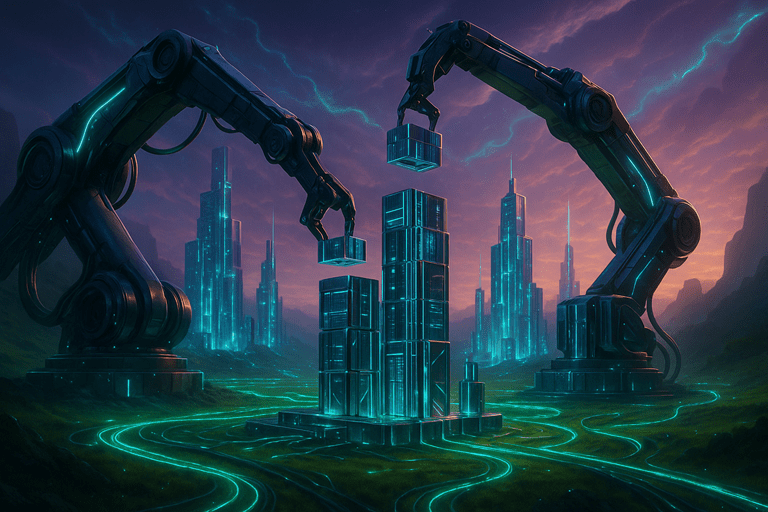Are 3D-Printed Data Centers a Sustainable Solution? 🏗️🌱
Introduction — Why It Matters 🔥
With the explosive growth of data and the need for heavy computations, data centers account for a significant portion of global energy consumption and carbon emissions. Data center electricity usage is about 1–2% of global energy consumption and is expected to increase by 2030. This consumption is not limited to electricity; the materials used in constructing data centers also contribute significantly to embodied carbon. Utilizing 3D printing (3DCP) in building data centers can transform sustainability by reducing waste, shortening construction time, and enabling parametric design.
The purpose of this article is to explore the advantages, challenges, real case studies, comparison with traditional methods, and practical recommendations to determine whether 3D-printed data centers are a sustainable and feasible solution.
Why It Matters 🌎
- ⚡ Data centers account for 1–2% of global energy consumption, and this number is expected to rise in the future.
- 🏗️ The use of concrete and steel in data center construction leads to high embodied CO₂ emissions.
- 🖨️ 3D printing enables waste reduction, time savings, and energy-efficient design.
- 🏢 Large tech companies aim to reduce environmental impact and achieve long-term savings.
- ☁️ With growing demand for data and cloud computing, sustainable and scalable solutions are needed.
Technical & Environmental Analysis 🧠
Case Studies 🧾
Traditional vs 3D Printing Comparison 📊
| Metric | Traditional | 3D Printing |
|---|---|---|
| Shell construction time (~600m²) | Several weeks to months | ~140–170 hours |
| Material waste | 20–30% | Less than 5% |
| Parametric design | Limited, costly | High, no molds |
| Embodied carbon reduction | Dependent on materials | High potential with low-carbon materials |
| Rebar requirement | Standard | Required, more complex design |
Material & Construction Time Chart ⏱️
Expert Quotes 🗣️
3D printing can rapidly construct industrial structures with high design freedom; however, independent LCA studies are needed to verify the carbon advantage.
— Dr. Fabian Mirer-Brotz, PERI [Source]
Reducing embodied carbon is only effective when combined with data center energy optimization.
— RMI Embodied Carbon Initiative [Source]
In the future, 3D printing could redefine data center construction standards and achieve true sustainability.
— Google Senior Engineer [Source]
Practical Recommendations 🛠️
Use low-carbon materials and alternative concretes to reduce embodied carbon.
Combine 3D printing with data center energy and cooling optimization.
Conduct small-scale pilot projects before large-scale deployment to test and evaluate risks.
Coordinate with local regulations and insurance to ensure safety and project credibility.
Perform independent LCA studies to validate actual carbon reductions.
Conclusion 🌱
3D printing of data centers is an innovative and sustainable solution, especially for small-scale projects requiring customized design. Combining it with clean operations and energy optimization ensures real-world impact. This approach delivers speed, cost reduction, and environmental sustainability. ⚡🏗️
Case studies and technical analysis show that 3D printing of data centers is not only feasible but a forward-looking and sustainable solution for tech and environmental companies. This technology can significantly redefine data center design and construction standards. 🌍💡

